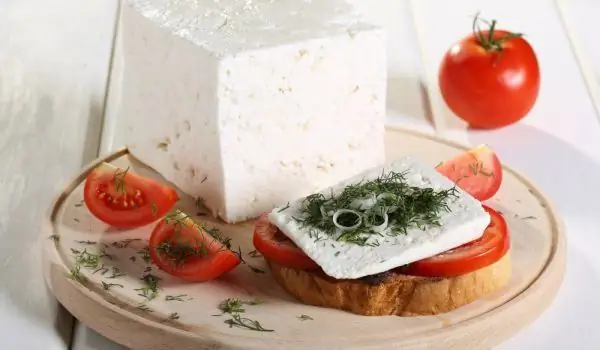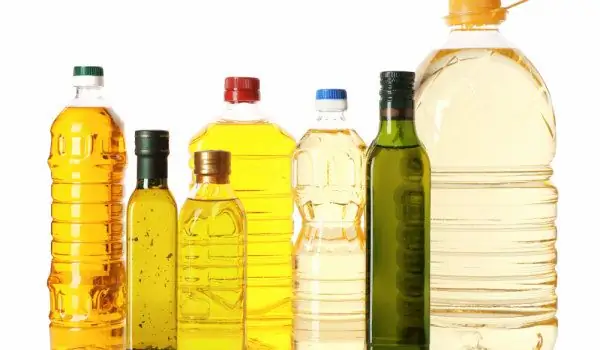2025 Author: Jasmine Walkman | [email protected]. Last modified: 2025-01-23 10:18
If you maintain a gluten-free diet, you probably need to look for gluten-free foods. Gluten, which is found in grains, especially wheat flour, performs certain functions in cooking and baking that are somewhat unique to gluten itself.
They are hard to find gluten free foods. There are two products that can perform functions similar to gluten: gelatin and agar agar. These two supplements can be used interchangeably in gluten-free recipes, but there are differences between them. Before you dive into gluten substitutes, it is best to have a clear idea of what he is doing.
What is gluten?

Photo: Vanya Georgieva
Gluten is a mixture of two proteins (people with celiac disease are allergic to these proteins). When contained in a recipe, for example in the flour in a cake, it performs several different tasks: it provides a binder, structure, elasticity and moisture retention.
Gluten helps to bring the ingredients together and hold them together, creating something like a structural pillar that starch adheres to, allowing flour agents to do their job. Elasticity means that the mixture can be stretched but still held together, as well as transformed into shape (and stay that way), like when making oblong breads or round pizza. Foods with gluten will last longer than those that do not contain gluten, as gluten retains moisture in the food and slows its stagnation.
Gluten replacement

Gluten free baked goods are dry, thick and heavy and will disintegrate outside the oven. That's why chefs and bakers have found that adding an ingredient to take its place is the best solution (compared to changing, increasing or decreasing other ingredients in the recipe). These may include xanthan gum and guar gum, as well as gelatin and agar agar. Due to some concerns about the safety of xanthan and guar gum and reports of digestive problems, many people have turned to natural gelatin and agar agar.
Use of gelatin
Most of us know gelatin as a colored powder that turns into jelly. Gelatin itself is used as an additive to some recipes. Gelatin is processed into powder from animal bones, hooves and connective tissue (which makes it unsuitable for vegetarian diets). The powder has no odor or color and dissolves in water. You should be able to find gelatin in almost any store.
When combined with water, gelatin becomes a gel that actually traps water, resulting in a stretchy dough. Thus, it is used in gluten-free pizza recipes, as it makes the dough more flexible and easier to shape without cracking.
Using agar agar

Agar agar is a vegetarian alternative that does not contain flavorings and is used for processed foods. It is made from red algae and processed into leaves, flakes and powder. Powder and flake forms are easy to work with and high in protein and fiber. When cooking a gluten-free recipe, follow the instructions on the product packaging for use, but it is a good rule to use 1 tablespoon of agar flakes to thicken 1 cup of liquid. If powdered, use 1 teaspoon of agar to thicken 1 cup of liquid.
Agar agar is used in processed foods to obtain a gel-like texture, thicken, texture and stabilize confectionery, dairy products, baked goods, sauces and dressings, meat products and even beverages.
Recommended:
Agar-agar

Agar-agar or just agar is a gelling agent - polysaride, which is extracted from several species of red algae. It is a mixture of the polysaccharides agaropectin and agarose from the algae Gelidium, Gracilaria, Geranium and others that grow in the Pacific Ocean and the White Sea.
Culinary Guide: Production And Application Of Gelatin

Gelatin is an additive that is most commonly used in confectionery. Helps increase the durability and firm consistency of products. When using gelatin, many liquid products can be made into jelly. Gelatin is made from the tissues of live mammals, derived from collagen tissue, which is located in the connective tissue in the area of connection of muscles and bones.
We Eat Less And Less Native Cheese And More And More Gouda And Cheddar

The sale of white brined cheese in Bulgaria is much lower compared to the consumption in 2006, shows an analysis of the Institute of Agrarian Economics, quoted by the newspaper Trud. Consumption of yellow cheese in our country has also fallen.
Modern Diets And Giving Up Gluten And Milk Guarantee Osteoporosis

More and more people are going to extremes in their quest to eat healthily. Recently, organizations fighting osteoporosis have come up with the position that the trend towards clean eating and dieting will create a generation with extremely brittle bones.
Basic Cooking Oils In Cooking! Which Is Used For What

The shelves of modern stores abound in a wide range of vegetable oils. However, most housewives use only two types of oil - one for frying, the other for dressing salads. This approach is not entirely correct. Modern nutritionists recommend that you have about five species various oils in the kitchen and alternate their use.

